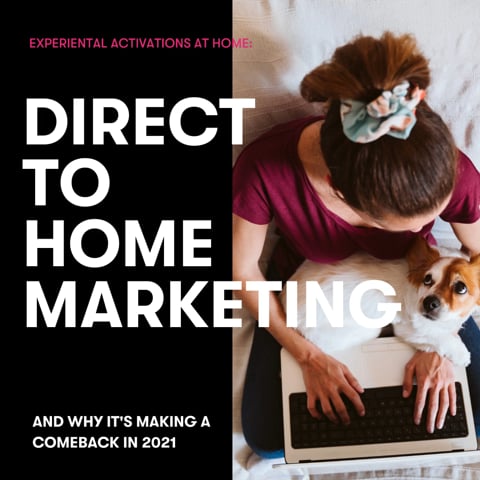2020 changed the way that consumers engage with brands completely. Where previously, brands could take over areas of public space, reaching potential customers in train stations, shopping centres and even the sides of buses, they now find that their audience isn’t in the streets anymore, and their efforts are being wasted.
Brands are starting to see the value in a different kind of marketing – reaching audiences in the home. But how do you create brand presence at home? And how can you navigate consumer sentiments about intrusive and annoying advertising?
The answer is to create experiences, rather than ads – the more that your marketing is tailored towards supplying something valuable to your audience, the more likely they are to engage with your brand, and become customers in the long run. This isn’t restricted to old-school door drops – your content just needs to be more agile.
The decline of direct-to-home
Once, direct to home marketing was all the rage. Marketers sent out regular mailers, sales people walked right up to front doors, and telemarketing was the primary method used by most major brands throughout the 90s and 00s. However, direct marketing in this way rapidly meant businesses were getting a bad name – unsolicited calls and letters became a nuisance, and so brands adopted other methods of attracting potential customers.
With the rise of digital marketing, changes in GDPR, and the knowledge that up to 90% of junk mail goes straight into the bin, it’s no surprise that larger brands have leaned away from reaching audiences at home.
This changed in 2020. With government stay at home orders still in place, the world of marketing finds itself on shaky foundations. Rather than investing in PR stunts, billboards, and store advertising, it meant that there was only one place to catch potential customers – in their homes. Ordinarily, TV advertising would thrive, but with streaming services becoming the norm, even this avenue isn’t proving as lucrative as it has in the past. Audiences are hungry for something more, and in order to actually activate your content, you need to deliver it in the right way.
Experiential means reaching people in the places that work for them
People hate adverts. It’s a simple fact that brands come up against, no matter what they sell. In recent years, adverts have been showing up across platforms so frequently that the consumer has developed ‘ad-blindness’, and is trained to spot the signals, no matter how well you disguise it. With influencers having to declare paid promotions and unskippable ads infiltrating platforms like YouTube and the ever-declining Snapchat, the importance of advertising without actually advertising is becoming more difficult. To reach your audience in a way that doesn’t make them instantly hate your brand, you need to be more focused on reaching them in the right way , and providing an experience that’s more tailored to where they are and what they want to see. The digital space means that consumers have a variety of choice, and more power than ever. This means brands need to be able to show off why their brand can add value.
Throughout the first lockdown in the UK, brands stumbled over themselves to flood social media with what they believed would engage their audience. From Instagram live giveaways to LinkedIn webinars, the market became saturated with brand after brand attempting to carve out a place for themselves online – but inadvertently managing to look exactly the same as everyone else. With large scale events out of the picture for the foreseeable, it’s time for brands to pivot their efforts into creating experiences online that aren’t stuck in the past.
Reaching the home digitally
In 2020, the BBC managed to pull off a virtual variety show featuring the likes of Taylor Swift , Billie Eilish, the Rolling Stones and Sam Smith, and brands like Brewdog launched an online bar to provide people with an at-home experience throughout lockdown. Importantly, these events, and the marketing activities surrounding them, managed to tap into what home audiences were missing – with gigs cancelled and pubs closed to the public, people at home were missing in-person interactions. Your brand’s marketing needs to be doing the same thing.
With tech, we are now more able to reach audiences in their homes than ever before. Plus, we’re in a position to bring events to the virtual space using VR and AR, technologies that many brands are reluctant to adopt. Creating immersive experiences means creating events that audiences can feel like they’re a part of. It’s this reason that content like quizzes, polls, and games have been climbing in popularity, while older static ads are vanishing from our screens.
In 2021, direct to home marketing needs to have a different meaning. Reaching people in their homes is no longer about sending out mailers or picking up the phone, but rather about creating rounded experiences centred on your brand. With the ability to create personalised, modern experiences via your brand’s app, or through online events that encourage collaboration and enable audiences to feel connected, you’re able to reach your potential customers where they need it most – and where they’re comfortable. Lockdown has changed the ways that consumers interact with brands – they’re no longer after generic ads, but want to see a more tailored, personal connection. The brands that truly understand their audience and how to reach them will be the ones that thrive in 2021.

